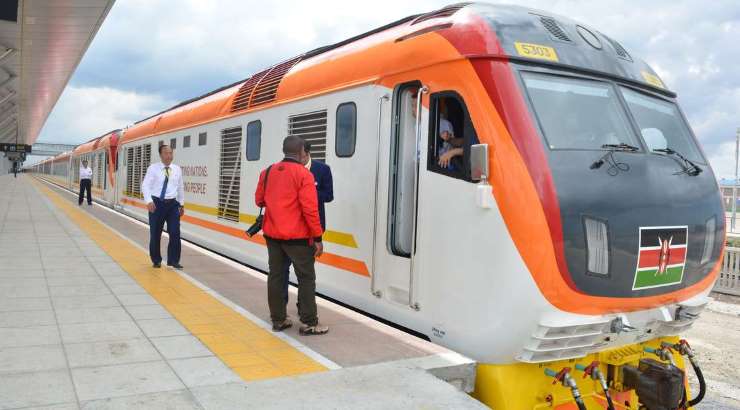Infrastructure
Negative Effects of SGR on the Kenyan Economy
Some of the major negative effects of the SGR on the Kenyan economy.

The Kenya Standard Gauge Railway (SGR), billed as the biggest transport infrastructure project in the country’s history, seeks to provide efficient mobility of cargo and passengers.
A flagship project of the Kenya Vision 2030, the SGR extends from the port of Mombasa at the Indian Ocean to Malaba town at the Kenya-Uganda border.
The initial phase of the project running from Mombasa to Nairobi was completed in 2017 and is operational with 14 freight and 4 passenger trains while the second phase – Nairobi-Naivasha SGR – is currently under construction.
Although the railway is a worthwhile project expected to bring in numerous socio-economic benefits and grow the country’s GDP by 1.5%, it is a two-faced sword with demerits.
Here are the negative effects of the SGR on the Kenyan economy:
1.) Increased debt
Kenya’s public debt continues to burgeon and is now considered to be on the blink of unsustainable levels at 60% of the GDP.
So bad is the situation that the IMF has placed the country on its debt-distress watch list.
To salvage the situation, the government has rolled out measures to boost revenue collection for loan repayment such as the introduction of VAT on zero-rated items – raising the cost of living.
RELATED: Benefits of Kenya’s Standard Gauge Railway
While the SGR is set to be a key catalyst for economic growth, it is funded with a debt of Sh1.023 trillion without interest, making it the largest contributor to the ballooning debt.
2.) Market disruption
With reduced travel time and costs, coupled with safer travelling conditions, the SGR is set to become the preferred mode of transport for passengers and cargo owners hence taking a huge percentage of them off the roads.
Unfortunately, these positive aspects of the project are set to occasion diminished business and loss of income for truck and bus owners and job loss for drivers, turn boys and truck loaders.
3.) Collapse of towns
As SGR edges out trucks in long-distance cargo transport, towns and market centers heavily reliant on trucks for business opportunities will be in danger of economic downfall as establishments such as hotels, bars, lodgings and garages collapse due to lack of customers.
With their ruin, loss of livelihood for shop owners, mechanics, oil recyclers, and waiters will be imminent forcing them to migrate or change professions – which is time-consuming.
4.) Danger to environment
Pollution from dust, exhaust emissions, waste materials, oil spillage, noise, and vibrations from equipment and trains is bound to occur during the construction and operation of the railway.
The construction phase will also result in the destruction and loss of crops, natural vegetation and water bodies.
In addition, the line poses a danger to wildlife during and after construction in places where it passes through nature reserves. So far, trains have hit several lions and buffaloes as they snake their way through the Tsavo National Park.
5.) Involuntary resettlement
Resettlement because of infrastructure development is a common phenomenon in Kenya. While those displaced receive adequate compensation, starting afresh in a new location remains daunting even with such compensation.














